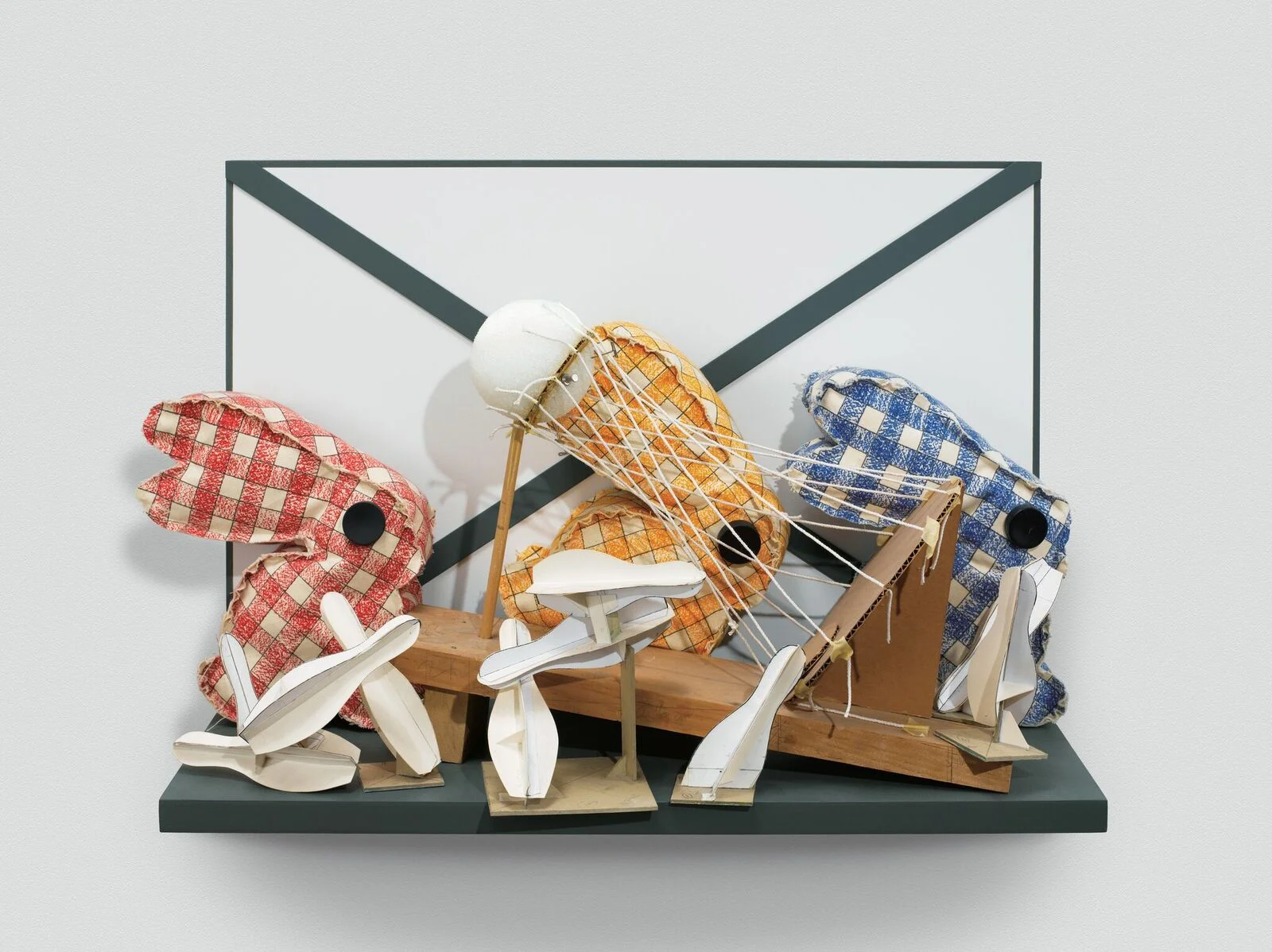Mike Berg
Degenerate Work
Site: Brooklyn
165 7th St, Brooklyn
“Berg’s intention behind his arbitrary selection process is to get away from his own proclivities in art making. When asked whether the skilled craftsmen of Usak—the carpet weaving capital of Turkey—could interpret these motif-less kilims they’ve woven in any way, the artist shies away from ascribing meaning to the works. They constitute another medium for him to make abstract paintings, and to focus on the process rather than the end result. Even if they told their own story to the weavers, he doesn’t want to know.”
Conceptual art meets traditional Turkish kilims in Mike Berg's solo exhibition Degenerate Work at Site: Brooklyn. The exhibition encompasses the artist's latest body of work, including tapestry, drawing, and sculpture that Berg uses to recapture the fleeting moment of creation. A kilim is a flat, hand-woven rug made in Turkey. Traditional weavers pick colorful threads and specific motifs to tell a story around a popular theme among which could be celebration of marriage, baby or new house. Istanbul-based New York artist Mike Berg strips meaning off his conceptual kilims to watch randomness at play at his latest show.
“I have a problem with any kind of symbolism,” Berg says when describing his Sol LeWitt-inspired drawing method. His process-driven practice includes dividing the geometric shapes he draws into smaller forms and randomly assigning a number to each from the financial pages of a newspaper. Each number corresponds to a color that he has previously picked. After rendering the drawing, the kilim conveys a collection of geometric shapes harmonized only by several strokes of luck.
Berg’s intention behind his arbitrary selection process is to get away from his own proclivities in art making. When asked whether the skilled craftsmen of Usak—the carpet weaving capital of Turkey—could interpret these motif-less kilims they’ve woven in any way, the artist shies away from ascribing meaning to the works. They constitute another medium for him to make abstract paintings and focus on the process rather than the end result. Even if they told their own story to the weavers, he doesn’t want to know.
The kilims’ irregular geometric shapes stand out against the white gallery wall as maps of an unknown territory. Upon closer inspection, the sizes of the knots in each colored region are different, and so is the texture. Some of the colors he has chosen look better in felt, cotton, and wool. This textural aspect is testament to the fact that they are not only to be looked at but touched, and even stepped on.
Over the course of his forty-year career, Berg has loved pattern but it was his introduction to Islamic art in early 2000s when he moved to Istanbul with his family that he came to incorporate these Eastern patterns into his work. The gestural ink drawings and the following bronze works displayed at the Site: Brooklyn are inspired by the preparatory work of calligraphers before they start the actual lettering. In that precursory activity, Berg sees a complete work of art transfused by randomness and action. The meticulous calculation that goes into making the three dimensional bronze sculptures by hand starkly contrasts the spontaneity of the gesture captured in these works. Hence they represent a moment in time, as if frozen and stable in perpetuity.
The exhibition title also reflects a moment in time when art is being undermined by authoritarian political leaders in Turkey and the U.S., two countries that Berg spends his time. With the obvious reference to Nazi persecution of modern artists during World War II aside, the title seems to me more about the ephemerality of artwork in general with an emphasis on the impossibility of preserving the actual gesture which is central to Berg’s practice.
The exhibition remains on view through June 11, 2017.








